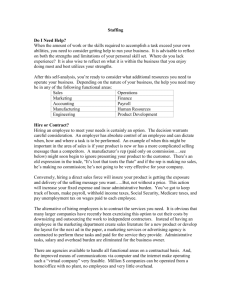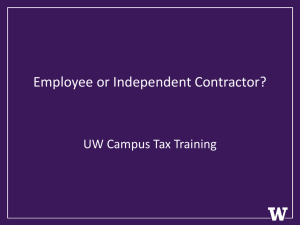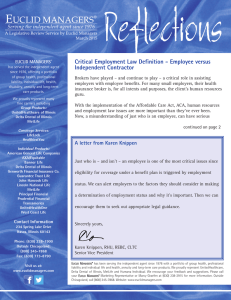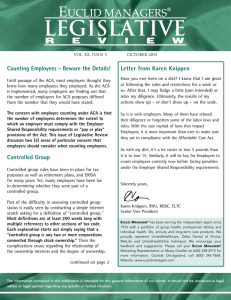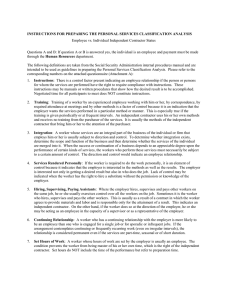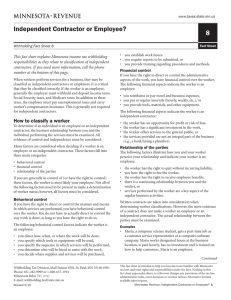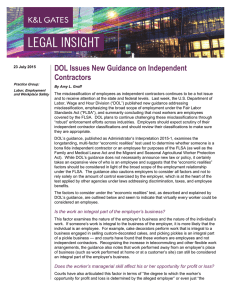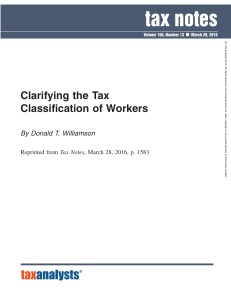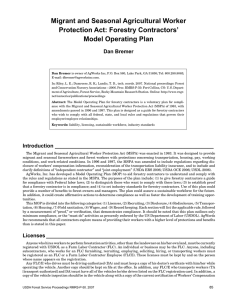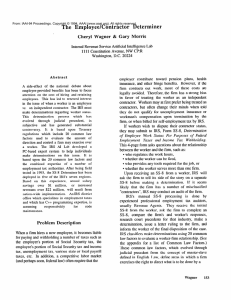At-a-Glance Worker Classification Guide: Independent Contractor vs. Employee
advertisement
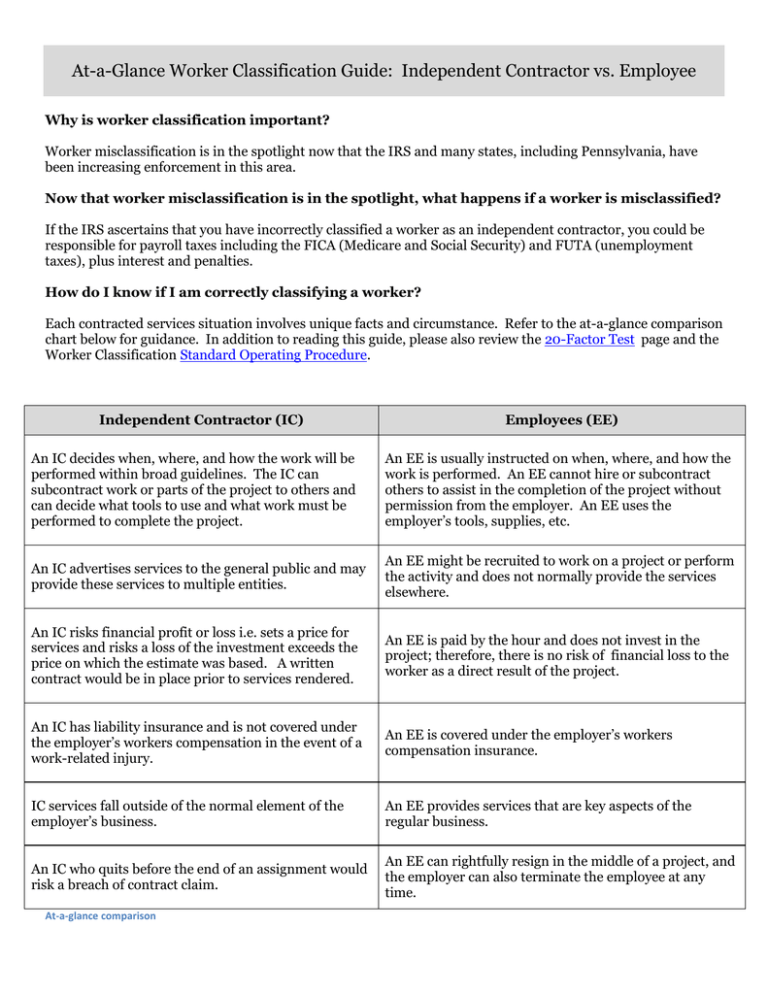
At-a-Glance Worker Classification Guide: Independent Contractor vs. Employee Why is worker classification important? Worker misclassification is in the spotlight now that the IRS and many states, including Pennsylvania, have been increasing enforcement in this area. Now that worker misclassification is in the spotlight, what happens if a worker is misclassified? If the IRS ascertains that you have incorrectly classified a worker as an independent contractor, you could be responsible for payroll taxes including the FICA (Medicare and Social Security) and FUTA (unemployment taxes), plus interest and penalties. How do I know if I am correctly classifying a worker? Each contracted services situation involves unique facts and circumstance. Refer to the at-a-glance comparison chart below for guidance. In addition to reading this guide, please also review the 20-Factor Test page and the Worker Classification Standard Operating Procedure. Independent Contractor (IC) Employees (EE) An IC decides when, where, and how the work will be performed within broad guidelines. The IC can subcontract work or parts of the project to others and can decide what tools to use and what work must be performed to complete the project. An EE is usually instructed on when, where, and how the work is performed. An EE cannot hire or subcontract others to assist in the completion of the project without permission from the employer. An EE uses the employer’s tools, supplies, etc. An IC advertises services to the general public and may provide these services to multiple entities. An EE might be recruited to work on a project or perform the activity and does not normally provide the services elsewhere. An IC risks financial profit or loss i.e. sets a price for services and risks a loss of the investment exceeds the price on which the estimate was based. A written contract would be in place prior to services rendered. An EE is paid by the hour and does not invest in the project; therefore, there is no risk of financial loss to the worker as a direct result of the project. An IC has liability insurance and is not covered under the employer’s workers compensation in the event of a work-related injury. An EE is covered under the employer’s workers compensation insurance. IC services fall outside of the normal element of the employer’s business. An EE provides services that are key aspects of the regular business. An IC who quits before the end of an assignment would risk a breach of contract claim. An EE can rightfully resign in the middle of a project, and the employer can also terminate the employee at any time. At-a-glance comparison

